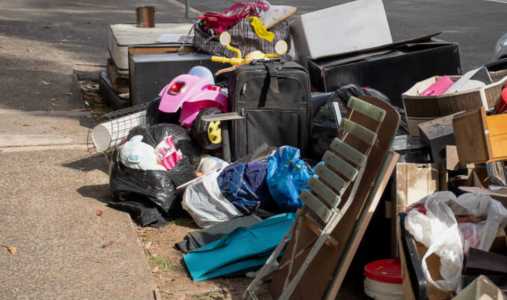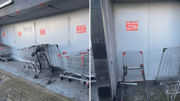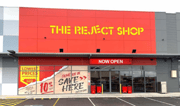Council eyes $37 waste levy as landfill space runs low
By
Gian T
- Replies 0
If you’ve ever dragged an old washing machine or fridge out to the kerb, hoping the council’s hard rubbish collection will whisk it away, you’re not alone.
For many Aussies, that’s the final stop for whitegoods that have seen better days.
But what happens after the council truck rumbles off? And what if we told you that Sydney could run out of landfill space in just five years?
That’s the alarming reality facing our biggest city, and it’s sparked a bold new proposal: a $37 levy on every large household appliance, aimed at tackling the mounting waste crisis.
A group of Sydney councils, led by the Southern Sydney Regional Organisation of Councils (SSROC), has sounded the alarm.
Their research shows that only 57 per cent of the materials in big appliances—think fridges, washing machines, and dishwashers—are actually recycled.

The rest is off to landfill, where it’ll sit for decades (or longer).
With Sydney’s landfill space predicted to run out in just five years, councils are scrambling for solutions.
The SSROC, in partnership with the Product Stewardship Centre of Excellence, has suggested a levy on manufacturers: $37 per appliance to cover the cost of collection and recycling.
If we want to go a step further and make sure more products are repaired or their parts recovered, that figure could rise to $49.
The idea is to shift responsibility from local councils and ratepayers to the manufacturers who make these products in the first place.
Instead of councils footing the bill (and, by extension, you through your rates), the cost would be built into the price of new appliances.
It’s not a new idea globally. In the European Union, manufacturers are already required to fund product stewardship schemes, and it’s helped boost recycling rates and reduce landfill. Here in Australia, though, we’re lagging behind.
You might think a fridge is just a big box of metal and plastic, but it’s a lot more complicated than that.
Modern appliances are packed with composite materials—wires coated in plastic, heat pumps, and, in the case of fridges, gases that can damage the ozone layer if not handled properly.
All up, 360,000 tonnes of large whitegoods entered the Australian market in 2019, creating a whopping 200,000 tonnes of e-waste.
Councils say they’re not equipped to deal with this level of complexity. As SSROC president John Faker put it, 'Councils were not established to be expert waste managers.'
And as appliances get more high-tech, the challenge only grows.
Interestingly, most manufacturers interviewed during the project supported the idea of a stewardship scheme—provided they have a say in how it’s designed.
After all, it’s in their interest to be seen as environmentally responsible, and a well-run scheme could even encourage them to design products that are easier to repair and recycle.
The proposal is still in the discussion phase, but it’s clear that something needs to change. If the levy goes ahead, you might notice a small increase in the price of new appliances.
But in return, you’ll be helping to fund a system that keeps more waste out of landfills and encourages manufacturers to think about what happens to their products after you’re done with them.
And who knows? With better recycling and repair programs, we might see fewer old fridges dumped on the kerb and more of them given a second life.

Would you be willing to pay a little extra for new appliances if it meant less waste inthe landfill? Have you had any good (or bad) experiences with council hard rubbish collections or appliance recycling? Share your thoughts and stories in the comments below.
Read more: Emergency services levy hike threatens household budgets across country
For many Aussies, that’s the final stop for whitegoods that have seen better days.
But what happens after the council truck rumbles off? And what if we told you that Sydney could run out of landfill space in just five years?
That’s the alarming reality facing our biggest city, and it’s sparked a bold new proposal: a $37 levy on every large household appliance, aimed at tackling the mounting waste crisis.
A group of Sydney councils, led by the Southern Sydney Regional Organisation of Councils (SSROC), has sounded the alarm.
Their research shows that only 57 per cent of the materials in big appliances—think fridges, washing machines, and dishwashers—are actually recycled.

Sydney councils propose $37 levy per appliance to fund whitegoods recycling as landfill space nears capacity in five years. Credit: Daria Nipot / iStock
With Sydney’s landfill space predicted to run out in just five years, councils are scrambling for solutions.
The SSROC, in partnership with the Product Stewardship Centre of Excellence, has suggested a levy on manufacturers: $37 per appliance to cover the cost of collection and recycling.
If we want to go a step further and make sure more products are repaired or their parts recovered, that figure could rise to $49.
The idea is to shift responsibility from local councils and ratepayers to the manufacturers who make these products in the first place.
Instead of councils footing the bill (and, by extension, you through your rates), the cost would be built into the price of new appliances.
This is known as 'product stewardship'—the principle that those who make and profit from products should also help manage their end-of-life impact.It’s not a new idea globally. In the European Union, manufacturers are already required to fund product stewardship schemes, and it’s helped boost recycling rates and reduce landfill. Here in Australia, though, we’re lagging behind.
You might think a fridge is just a big box of metal and plastic, but it’s a lot more complicated than that.
All up, 360,000 tonnes of large whitegoods entered the Australian market in 2019, creating a whopping 200,000 tonnes of e-waste.
Councils say they’re not equipped to deal with this level of complexity. As SSROC president John Faker put it, 'Councils were not established to be expert waste managers.'
And as appliances get more high-tech, the challenge only grows.
Interestingly, most manufacturers interviewed during the project supported the idea of a stewardship scheme—provided they have a say in how it’s designed.
After all, it’s in their interest to be seen as environmentally responsible, and a well-run scheme could even encourage them to design products that are easier to repair and recycle.
But in return, you’ll be helping to fund a system that keeps more waste out of landfills and encourages manufacturers to think about what happens to their products after you’re done with them.
And who knows? With better recycling and repair programs, we might see fewer old fridges dumped on the kerb and more of them given a second life.
Key Takeaways
- Sydney councils have proposed a levy of $37 per appliance to help cover the cost of collecting and recycling old whitegoods, as landfill space is expected to run out in five years.
- Research shows only 57 per cent of materials in large household appliances are currently being recycled, with complex components like plastic-coated wires and gases in fridges posing major challenges.
- The Southern Sydney Regional Organisation of Councils, along with experts, argues that responsibility for product disposal and recycling should fall to manufacturers, not just councils and the community.
- Manufacturers interviewed generally supported a stewardship scheme, provided industry is involved in its design, similar to regulations already in place in the European Union.
Read more: Emergency services levy hike threatens household budgets across country







